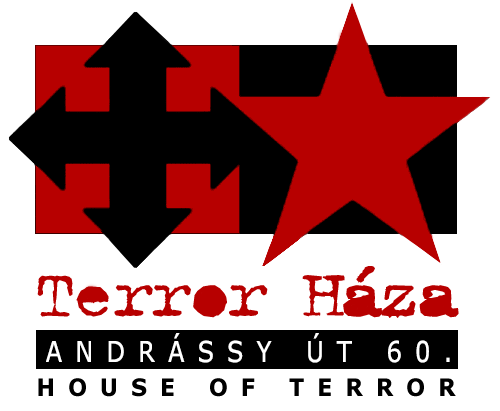Over 800 dossiers originating from the former Bureau of History are displayed in the room. Some of them contain copies of material relating to political trials, indictments, sentences, appeals, records of investigations from the period 1945-1956. The walls are lined with similar material, as are the benches and the judge's chair. The niche with its velvet-covered chair and telephone symbolizes the practice of arbitrary jurisprudence, insulting the principle of separation of powers and contrary to a constitutional state's prerequisite of judicial independence. The monitor shows a close on one-hour long propaganda film made in 1958 about the Imre Nagy trial.
“Let us learn a little class struggle from the justice system of fascism.”
József Domonkos, President of the Supreme Court of Hungary, 28 March 1957
The judiciary could not remain independent in communist dictatorships. Highly qualified judges were often replaced with uneducated party servants who had been given crash training courses. The latter would then preside over hundreds of sham trials. These were mostly held behind closed doors, with completely baseless, fabricated charges, and verdicts decided before proceedings had even begun. Some such trials were also public show trials, intended as a kind of theatrical spectacle. In these “performances”, everything was staged in advance: torture was used to force the accused to learn their roles, and they had to “confess” in front of the press and film cameras, to demonstrate to the public how “just” the Party was.
Equality before the law was also abandoned, and well-to-do farmers, aristocrats and members of the bourgeoisie – so-called “class aliens” – were subject to much harsher sentences than members of the “working class” for the same offences. Between 1945 and 1956, in peacetime (!), 487 people were executed on political grounds, and the “kulak trials” of peasants with larger land holdings targeted more than 300,000 people.
After the 1956 Revolution and Freedom Fight, János Kádár ordered a brutal reprisals. More than 26,000 people were given prison sentences, and currently available data shows that nearly 230 freedom fighters were executed. To ensure that even the youngest did not escape the gallows, the minimum age at which people could be sentenced to death was lowered to sixteen.
After the fall of communism in 1989–90, the hanging judges and prosecutors who had served the communist regime were not held to account, but our exhibition serves as a means to denounce many of them.













